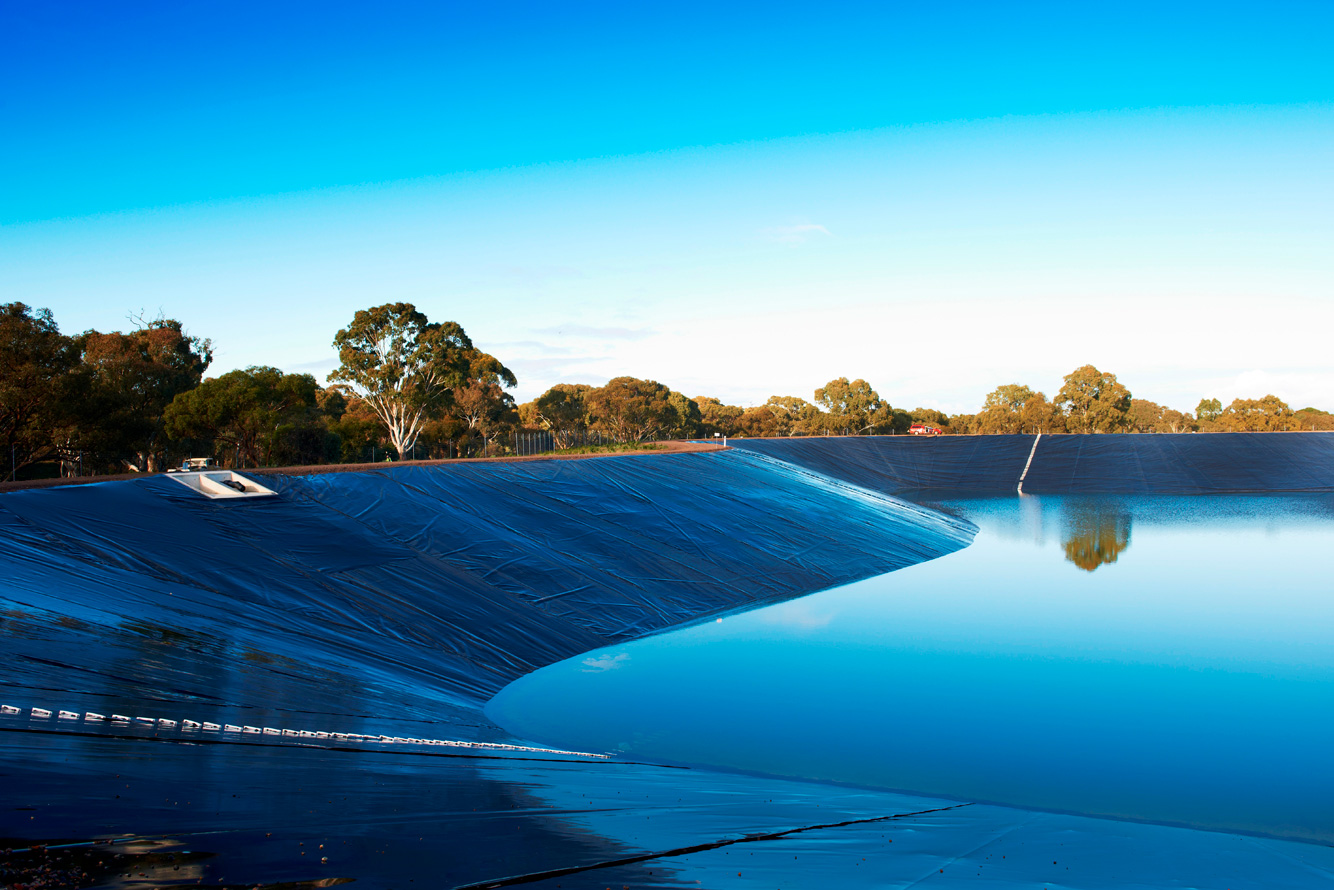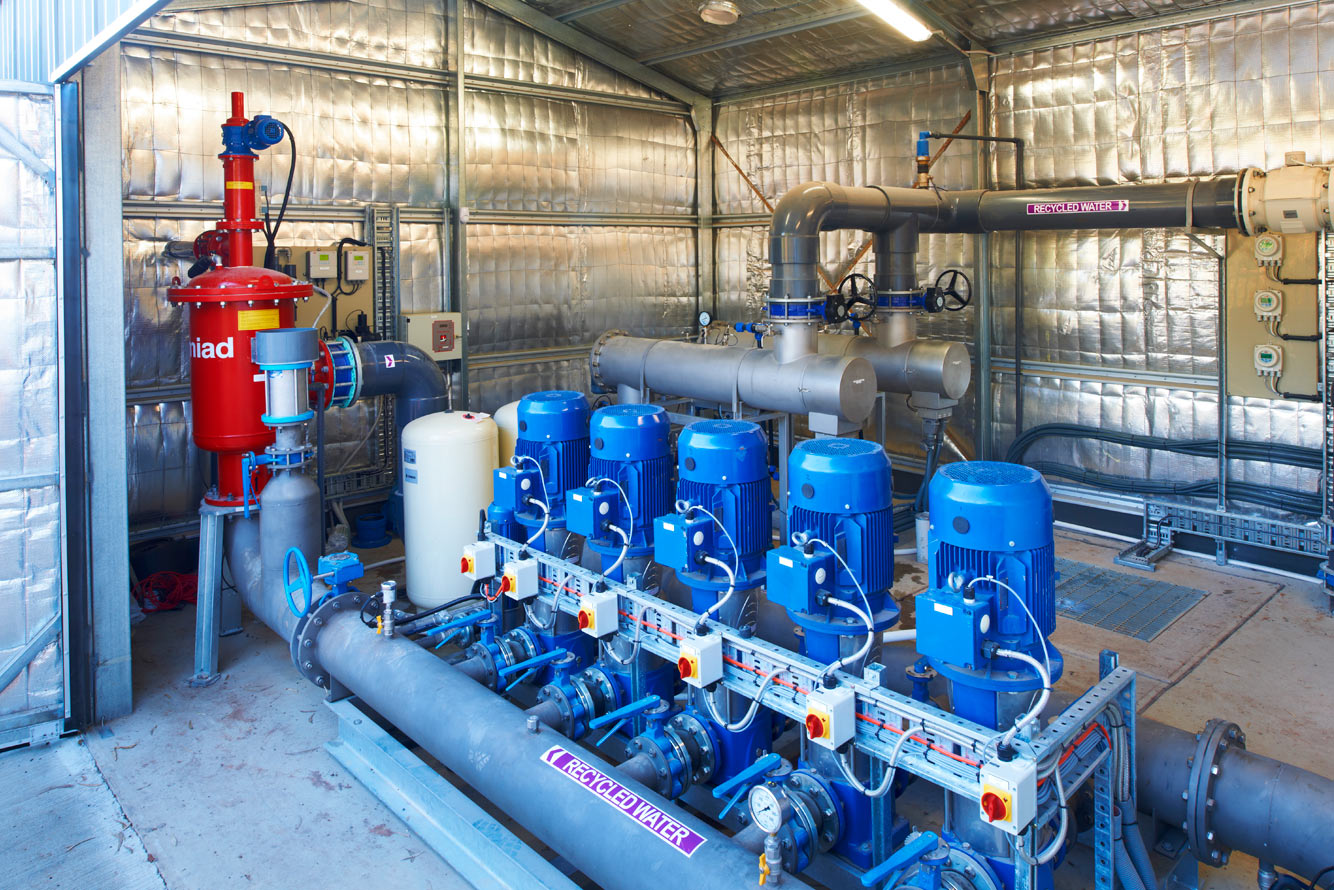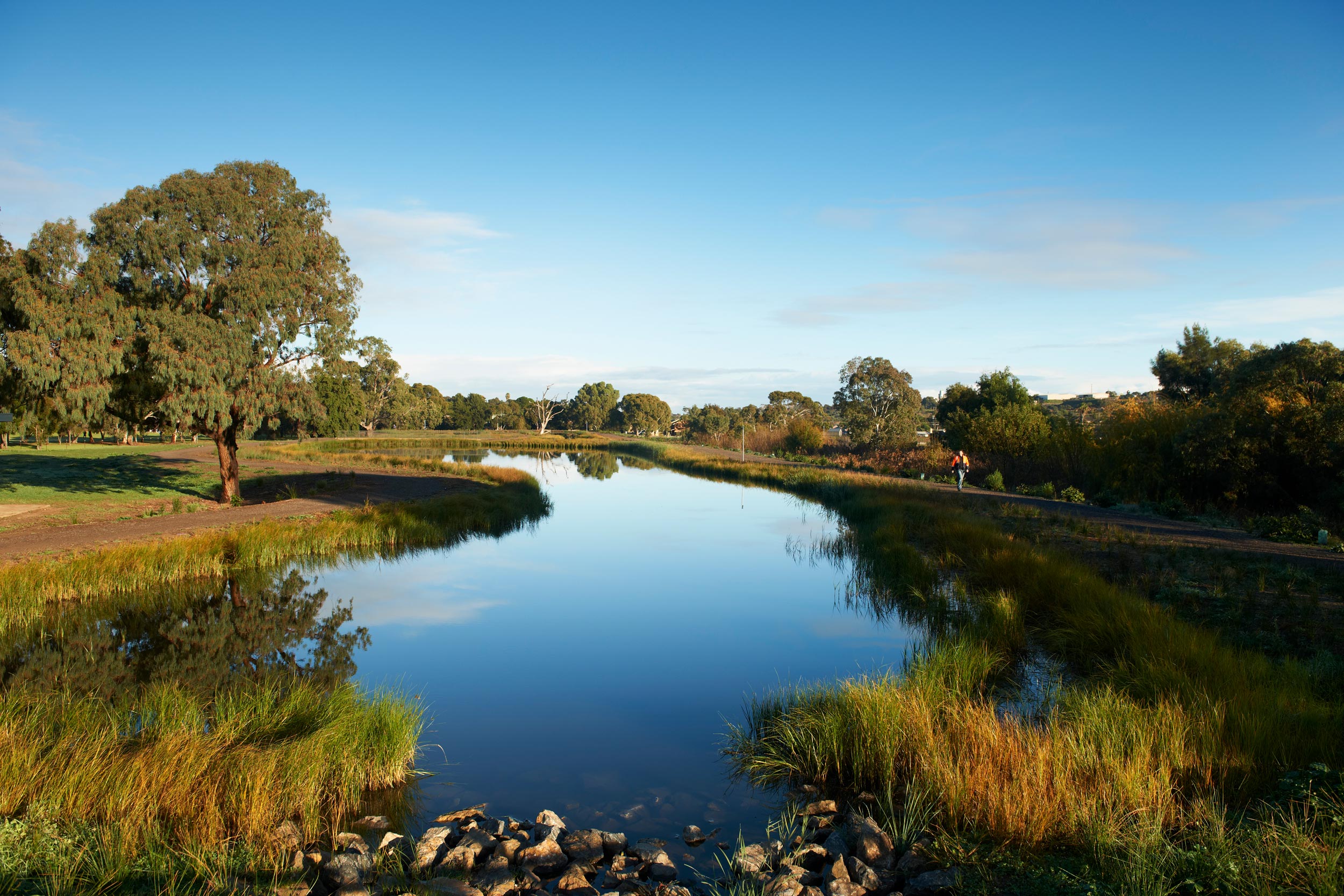Key features
Through an innovative approach to process and control, all pump stations are connected to a common distribution system, but operate completely independently by electronic controls and logic. Each pump station is able to self-reset after power failures preventing the need for attention by operators other than to undertake monthly servicing or repair faults. All pumps and controls, data points and trend information is communicated back to the central SCADA server located at the Council chambers allowing remote operation of the system.
Each wetland is able to supply water directly to demands on the network. Filtration and UV treatment occurs at each pump station to achieve water quality requirements.
Leed continued to operate each system on behalf of Council during the maintenance period before handing the systems over to the council.
Outcomes
This highly successful project has met its goal of ensuring sustainable water use across the Council area. The project is financially self-sustaining, with the income from the sale of water covering all servicing, operational and staffing costs as well as providing for future expansion. In addition, the project:
- was a model of excellent community engagement, resulting in a very high level of community satisfaction with the outcomes
- brought local amenity and environmental biodiversity improvements, including water quality improvement for coastal discharge
- created economic development outcomes through the provision of an alternative source of water
- delivered flood mitigation, in particular Pedler Creek and the upper reaches of the Field River
- the creation of alternative water supply schemes in the northern and southern areas supported the council's urban growth strategies, for example through infill/regeneration in the north and slow greenfield development in the south of the council area.



